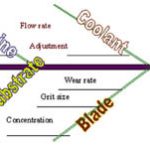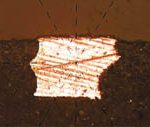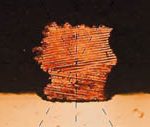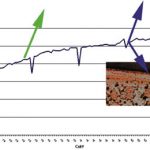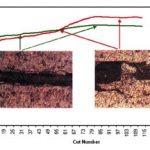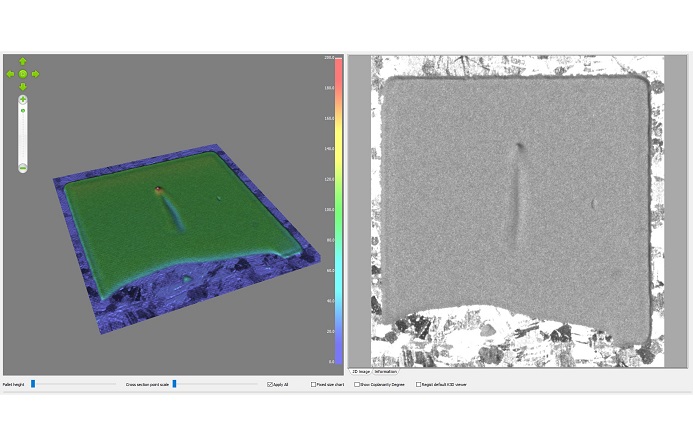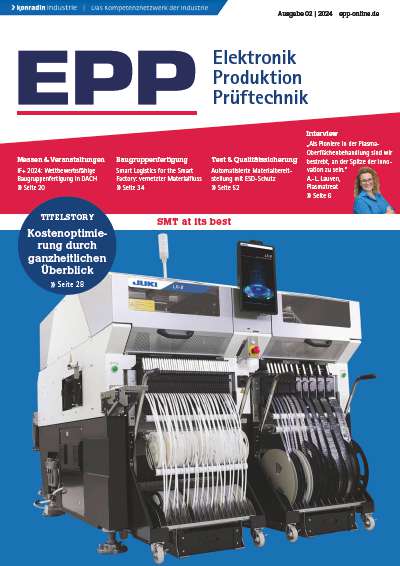The dicing or sawing process is the very first step within the assembly or packaging process of semiconductors. Its performance can have an incredible effect on assembly yields and, in more specific cases, can even affect test results, general yield and device reliability. Depending on the molding technology used, dicing also can be one of the last steps in the assembly of ball grid array (BGA) packages.
Ilan Weisshaus, Tommy Weiss, Kulicke & Soffa Dicing Systems, Israel
BGA packages can come (in case of so-called chocolate blocks) on panels that must be separated, or singulated, into individual units. The singulation is done on a dicing saw in a process that is similar to wafer dicing. However, because the panel substrate material differs from silicon, the tools and process parameters change correspondingly. The most important requirements shared by silicon dicing and BGA substrate singulation are the need to maintain the highest possible yield and cut quality.
The dicing process is done by a rotating abrasive blade, which creates grooves in the substrate material as it is pushed against it. The grooves travel through the substrate and are responsible for parting it. Detailed description of the dicing mechanism is described by Levinson, Weisshaus & Efrat (1). Figure 1 shows a schematic chart of the factors that affect the cut quality. The term “cut quality” refers to cut straightness, cut width, integrity of the cut edge (chipping in the case of silicon dice and copper burrs plus smearing in thecase of BGA panels) and cut perpendicularity.
All these factors are also manifested in the changes of the interaction force between the blade and the substrate. Correlation of cut quality with the blade and substrate interaction force provides a feedback signal for process monitoring and control. Once the correlation between interaction force and quality is established and calibrated, the measurements of its variations enable the determination of process deviations and damage formation. The use of this monitoring and control tool is the key for yield and productivity enhancement.
Correlation between cut quality and force
The correlation between the force and the cut quality in the case of silicon wafers has been shown by Weisshaus & Efrat (1,2). As shown in figure 2, a process limit can be set that defines a no-damage zone. Deviation from this zone is accompanied by severe damage to the dice in the form of back side chipping. Here, we also discuss the correlation of cut quality and force for BGA panel singulation.
In figure 3, the force measured for dicing a copper leadframe BGA panel is presented. The force continuously increases from cut line to cut line. As seen from blade photos, the reason for the increase in measured force is blade clogging by copper. The blade clogging is responsible for the burrs and smearing formation as shown in figure 3B. The burrs and smearing are the reason for reject and yield loss. The knowledge that the blade has reached a certain level of clogging, which is risky to cut quality, allows corrective action to avoid critical deterioration and prevent yield loss.
Blade conditioning
Automatic dicing systems include a process program that defines the blade for the process and the working parameters, such as feed rate, spindle speed and cut depth. Once the process program is established, it has to be fine-tuned or optimized with the help of the force monitor. When process optimization is completed, the force monitor determines process deviations.
In many cases, deviation in force values are an indication of tool blade failure. The proper blade dressing and maintenance during the process should never be overlooked. Prior to the implementation of the force monitor, blade dressing was done using parameters chosen by a time-consuming trial-and-error method. This method never assured optimal dressing. In case of silicon substrate, incomplete dressing is a source of dice back side chipping.
Figure 4 shows the force chart obtained during dressing of a blade for silicon dicing. The blade dressing procedure was too fast; as a result, the blade feed rate was high. At this feed rate, the blade could not overcome the debris formed when grooving the substrate. The blade clogged and started to vibrate. The vibrations of the blade cause backside chipping.
In case of leadframe BGA substrate singulation, the blade has to be periodically conditioned to prevent clogging. The time for the conditioning procedure can be determined easily by the monitor, but is difficult to determine by trial-and-error. In both cases, incomplete dressing results in damage to the substrate and yield loss, which can be prevented only by proper monitoring of the process.
Yield gain
In the standard dicing method, inspection takes place after the completion of operation and removal of the wafer or panel from the dicer. Any adverse result will be detected in a resolution of an entire panel (wafer) unit. When the process is online monitored, the detection resolution is in the order of a die or single package. So by using the monitor, the inspection sensitivity to detect adverse effects is much higher. The higher resolution for problem detection enables a fast response and real-time corrective action. The fast response reduces yield loss, although the percentage of the reduction depends on the process and the substrate.
Productivity gain
In addition to preventing yield loss, the advantage of process monitoring is providing the ability to increase productivity. A monitor that enables the prediction of yield loss provides the confidence to increase to the maximum possible feed rate. In case of silicon wafer dicing, the monitor can be used for optimization as shown by Weisshaus & Efrat (1,2). Correlation of measured force values with certain benchmark values is a tool for determination of the feed rate limits. For maximum yield, processes should be kept within the allowed limits.
In case of BGA singulation, the same principle for determination of maximal feed rate should be applied. There is, however, one additional factor contributing in this case, which is fast blade clogging. The blade should be frequently cleaned in order to assure that changes in measured force are only due to changes in feed rate.Thus a precise value of the maxim feed rate is determined with the online monitor. Without this tool, only an approximate value can be determined by post-dicing inspection followed by trial-and-error. So, as a conclusion, it becomes clear that a monitored and controlled (with possibility for corrective action) dressing procedure contributes substantially to yield gain and productivity.
- 1) Udi Efrat, Ilan Weisshaus: Dicing Yield – Using Blade Torque to Monitor Back Side Chipping. Proceeding of Semicon Singapore, May 99.
- 2) Ilan Weisshaus, Dianne Shi and Udi Efrat: Wafer Dicing. Advanced Packaging, January 2000, pp.60 to 63.
Ilan Weisshaus manages the process development group at K&S Dicing Systems. He is responsible for developing, qualifying and optimizing dicing processes. He holds a Ph.D. and M.Sc.in material sciences from the Technion in Israel.
Tommy Weiss is director of technical marketing for K&S Dicing Systems. He has as over 15 years experience in packaging, assembly processes and assembly equipment design, and he has a B.Sc. degree in mechanical engineering and business administration.
Zusammenfassung
Teil des Packaging- bzw. Assemblyprozesses ist die Vereinzelung der einzelnen ICs, denn sie werden inPanels gefertigt, beispielsweise als sogenannte Schokoladentafeln. Dieser Trennvorgang beeinflußt erheblich die Fertigungsausbeute (Yield) sowie die Ergebnisse im IC-Funktionstest. Die Überwachung der Sägeprozedur ist mithin wesentlich für eine gute Produktqualität, Produktivität und günstige Kostensituation.
Résumé
La séparation (démariage) des différents circuits imprimés fait partie du processus d’emballage et d’assemblage, car ils sont fabriqués en panels,comparables à des tablettes de chocolat. Ce processus de séparation influence considérablement le rendement de production (yield) ainsi que les résultats des tests fonctionnels des CI. Le contrôle de la procédure de sciage est par conséquent essentiel pour obtenir une bonne qualité des produits, une productivité élevée et des coûts avantageux.
Sommario
Una parte del processo di Packaging o di Assembly è la singolarizzazione dei singoli circuiti integrati, in quanto essi vengono prodotti in panelli, p. es. come cosìddette tavolette di cioccolato. Questo processo di divisione influisce notevolmente sul rendimento della produzione (Yield) a pari modo dei risultati del test funzionale a cui vengono sottoposti i circuiti integrati. Il controllo del processo di taglio è però anche di essenziale importanza per una buona qualità di prodotto, per la produttività e per i costi.
Fax +1-215-659-7588
EPP 174
Unsere Webinar-Empfehlung
Applikationen aus dem Bereich der Leistungselektronik gewinnen immer mehr an Bedeutung. Die Inspektion dieser Applikation lässt sich mit der bewährten Standardtechnologie der 3D-Messtechnik bewerkstelligen.
Teilen:


